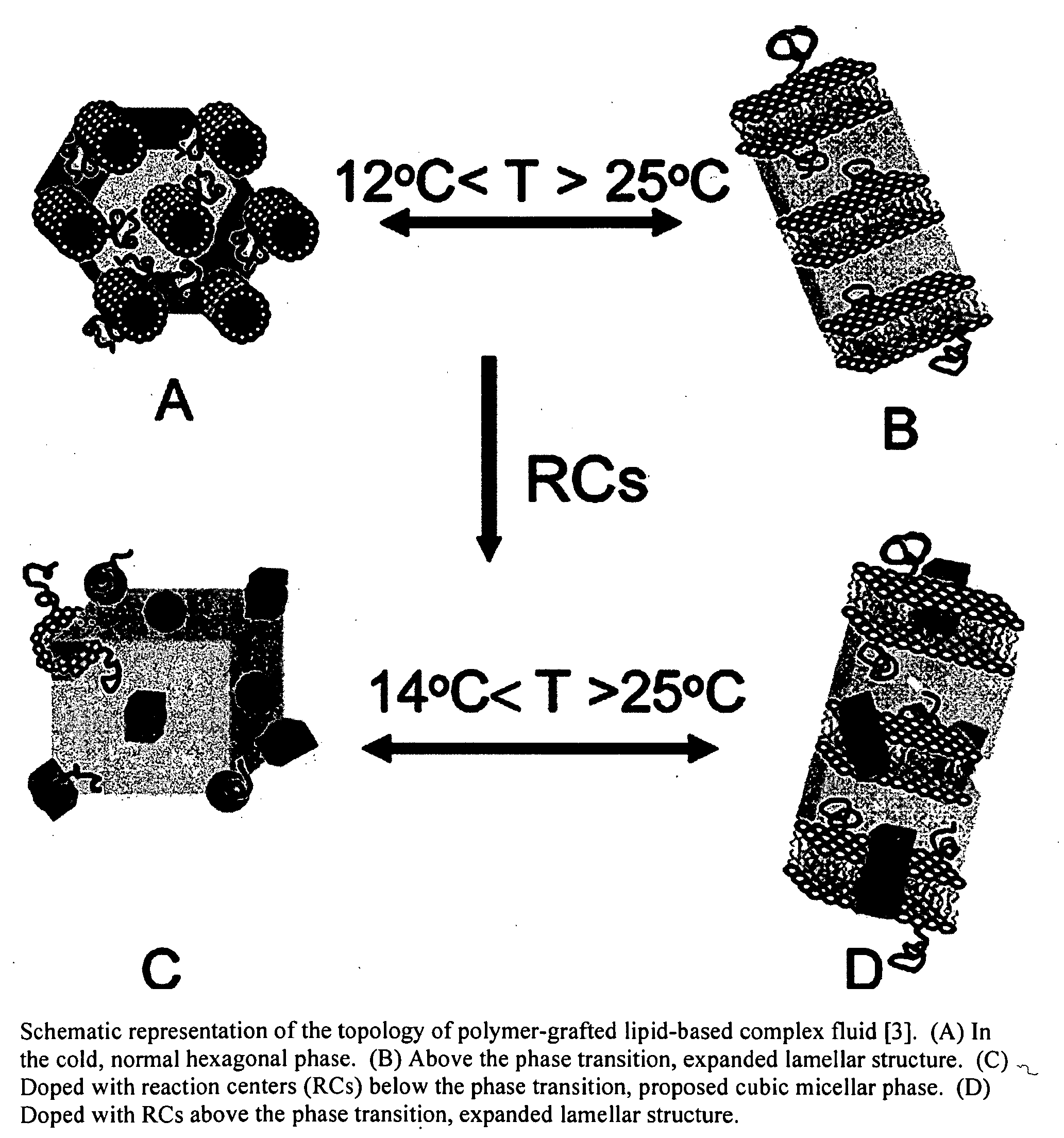Biomimetic materials for protein storage and transport
a biomimetic material and protein technology, applied in the field of biological molecules receiving and storing, can solve the problems of hardly a universal tool for extending the viability of proteins in their native state, and deleterious effects on the integrity of samples
- Summary
- Abstract
- Description
- Claims
- Application Information
AI Technical Summary
Benefits of technology
Problems solved by technology
Method used
Image
Examples
Embodiment Construction
[0030]The inventors have developed a method for storing proteins in their native state. The method facilitates the storage and transport of a myriad of types of proteins for later application, sale, characterization, and analysis. Membrane proteins, soluble proteins, and complexes of such proteins (whereby the complexes are of membrane proteins, soluble proteins, or a combination thereof) are all envisioned as extraction, storage and transport candidates.
[0031]The invented protocol enables viable protein to be sequestered indefinitely in within lipids (i.e., penetrating a portion or all of the bilayer), outside lipids (i.e., within the interlamellar spacing) or a combination of within the lipids and outside the lipids.
[0032]The resulting protein / liquid vehicle construct is capable of sequestering a myriad of biomolecules, including, but not limited to DNA, RNA, metabolite, cofactor, or other molecules ranging from a few atoms to several hundred amino acids or several thousand basepa...
PUM
| Property | Measurement | Unit |
|---|---|---|
| Electric charge | aaaaa | aaaaa |
| Temperature | aaaaa | aaaaa |
| Viscosity | aaaaa | aaaaa |
Abstract
Description
Claims
Application Information
 Login to View More
Login to View More - R&D
- Intellectual Property
- Life Sciences
- Materials
- Tech Scout
- Unparalleled Data Quality
- Higher Quality Content
- 60% Fewer Hallucinations
Browse by: Latest US Patents, China's latest patents, Technical Efficacy Thesaurus, Application Domain, Technology Topic, Popular Technical Reports.
© 2025 PatSnap. All rights reserved.Legal|Privacy policy|Modern Slavery Act Transparency Statement|Sitemap|About US| Contact US: help@patsnap.com



